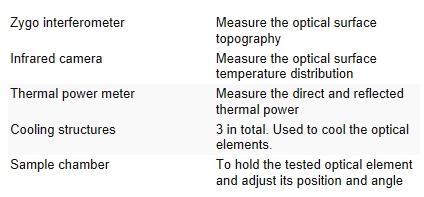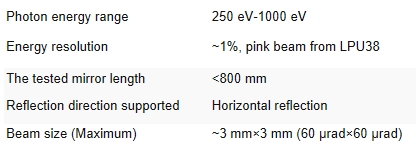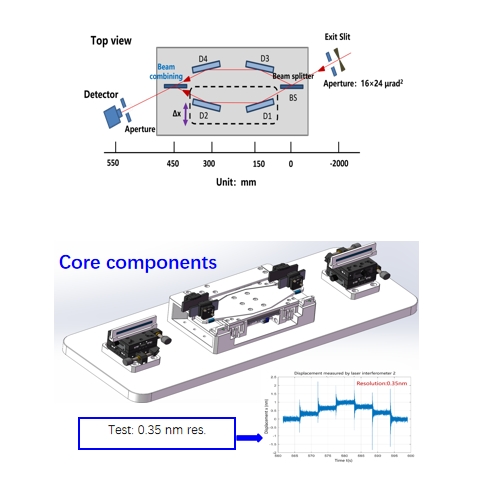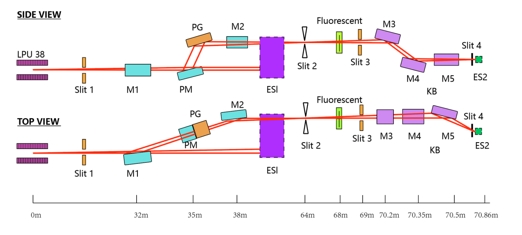- Mass Spectrometry for Energy Transformation and Astrochemistry
- Extreme Ultraviolet Electronic Structure Characterization and Lithography
- Electronic Structure Characterization for Operando Micro/Nano Devices
- High-sensitive, Space-Resolved and Time-Resolved Electron Spin Dynamics
- In-situ/Operando Soft X-ray Spectroscopy and Scattering
- Soft X-ray Ptychographic Nanoscopy
- Resonant Coherent Scattering
- High Throughput In-situ/Operando Tender X-ray Spectroscopy
- Tender X-ray Spectromicroscopy and Ptychography
- Test Beamline
Endstation for thermal management research

Overview
The endstation for thermal management research aims to support the thermal management for the in-houses development of SR instrumentation. It provides various sensors and detectors to probe the behaviour of the optical element (mainly mirror) with the shine of white beam. Visible light interferometer is placed outside the chamber to detector the change of the surface topography, infrared camera is used to monitor the temperature on the optical surface. An in-house developed thermal power meter is also installed to measure the direct and reflected thermal power from the source.
Key Equipment

Endstation for X-ray optics research

Overview
The endstation for X-ray optics research receives the attenuated and filtered fundamental-energy beam for in-house soft X-ray optics research. The beam is attenuated by a heat load chopper. The harmonic rejection mirrors absorb the higher harmonic beam as well as attenuate the incident beam. The endstation works on the fundamental energy ranging from 250 eV to 1000 eV. The bandwidth is the intrinsic value (~1%) from the LPU38.
Key Parameters

Mach-Zehnder interferometer

Overview
The Mach-Zehnder interferometer is placed after the slit (~64 m) for the mono beam. Its main task is to measure the high energy resolving power from the grating monochromator.
Key Parameters

Mono Beam Branch: Quantum Materials Imaging Beamline with Extreme Conditions

Overview
The Mono Beam Branch is an experimental endstation dedicated to in-situ imaging and manipulation studies of quantum materials. It employs techniques such as scanning coherent diffraction imaging and XPCS to investigate the evolution of nanoscale textures under continuously adjustable magnetic fields (0–1 T) and temperatures (0–300 K). The station is equipped with KB focusing mirrors and covers an energy range from 250 to 1500 eV, encompassing the absorption edges of key transition metal elements found in quantum materials. It achieves a spatial resolution between 8 and 20 nm.


